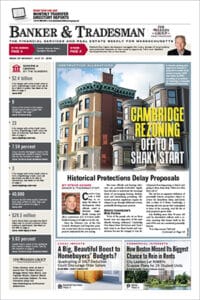
Susan Gittelman
A number of the casualties of the recent failure of the state legislature to pass the annual economic development bill by the end of this session on July 31 had to do with housing, and one of the most unfortunate was a change in state law regarding ADUs, or accessory dwelling units.
Housing advocates consider expanding the number of ADUs in the state one of the simplest and most obvious of the many proposed solutions to our continuing and even worsening housing shortage.
Some communities, including many on Cape Cod, already allow homes to be converted or expanded to include ADUs. But many don’t. The proposed provision in the economic development legislation that was debated but not passed would have allowed accessory dwelling units “by right” in communities statewide – without the prohibitions, restrictions or cumbersome permitting requirements that some cities and towns now have on the books.
“ADUs are a gentle way for communities to add new homes,” the advocacy group Abundant Housing Massachusetts argued recently. “They keep seniors in their communities by providing a space for a caregiver or supplemental income; they help families stay together by providing housing for grandparents, recent graduates, or loved ones with disabilities.”
Anyone can invite a relative to live in an extra bedroom. But ADUs, by definition, must have a certain amount of separation and independently accessed features to qualify. For most jurisdictions, those include secured exterior entrances, bathrooms, parking and cooking facilities or a full kitchen.
A Way to Meet the Moment
Experienced construction hands note ADUs are not easy or cheap to build.
“There’s no standardization. ADUs can be a lot of different things,” said Seth Adams, owner of The Pearl Co. of Falmouth, which develops housing in Massachusetts and Rhode Island and has engaged an architect to develop a half dozen ADU templates that are adaptable – both to existing homes or as stand-alone structures on lots that are large enough.
Adams said the typical ADU has one bedroom and is 350 to 650 square feet in size. Cost can be an obstacle, though. Adams said adapting a space in an existing residence can cost $100 to $150 a square foot, or upward of $50,000. A stand-alone building would likely cost twice that amount.
Nevertheless, housing specialists say it makes a lot of sense to encourage ADUs in part because of a disconnect that is increasingly be identified in supply and demand.
As the Boston Globe reported recently, the median sales price for a home in Greater Boston rose to $900,000 in June.
“‘Everybody’s stuck’ would be an apt descriptor of a market where the very properties both older and younger residents most want are in short supply, sending prices skyward,” the article said.
Millennials can’t afford the big houses that empty-nester couples want to get out of, and those who want to downsize balk at the prices of even the limited supply of smaller units.
Wide Support for Concept
The proposal to expand ADUs statewide included in the large Economic Development bill that did not pass would have prohibited communities from disallowing rental accessory dwelling units of 450 to 900 square feet in any single-family zoning district on a lot 5,000 square feet or larger. Local jurisdictions would have been allowed “reasonable” regulations about height and other dimensions.
According to AARP, which supports the ADU concept, Washington was the first state that kept local officials from banning ADUs, in 2000. Since then, about a half dozen states have followed suit by reducing local control.
Melvin Vieira, President of the Greater Boston Association of Realtors, said he was happy with the proposal in the economic development bill.
“It would make a huge difference,” he said. “Anything is better than nothing. You’ve got to start somewhere.”
David Wluka, owner of Wluka Real Estate Corp. in Sharon, was on a Zoning Reform Working Group under Govs. Paul Cellucci and Deval Patrick, and he pushed for ADUs back then “by right,” not just as a local option.
“ADUs are the least expensive way to provide additional housing,” Wluka told me. “They don’t take up any more land than single-family houses, so they help preserve open space. And if an owner wants to downsize, rental income helps them stay in the house and creates more neighborhood stability.”
The economic development bill was sidelined in the legislature this session, including the push for more ADUs. But Beacon Hill should revisit this soon and put roofs over more people’s heads.
Susan Gittelman is the executive director of B’nai B’rith Housing, a nonprofit affordable housing developer currently working in Boston, Metrowest and the North Shore.




